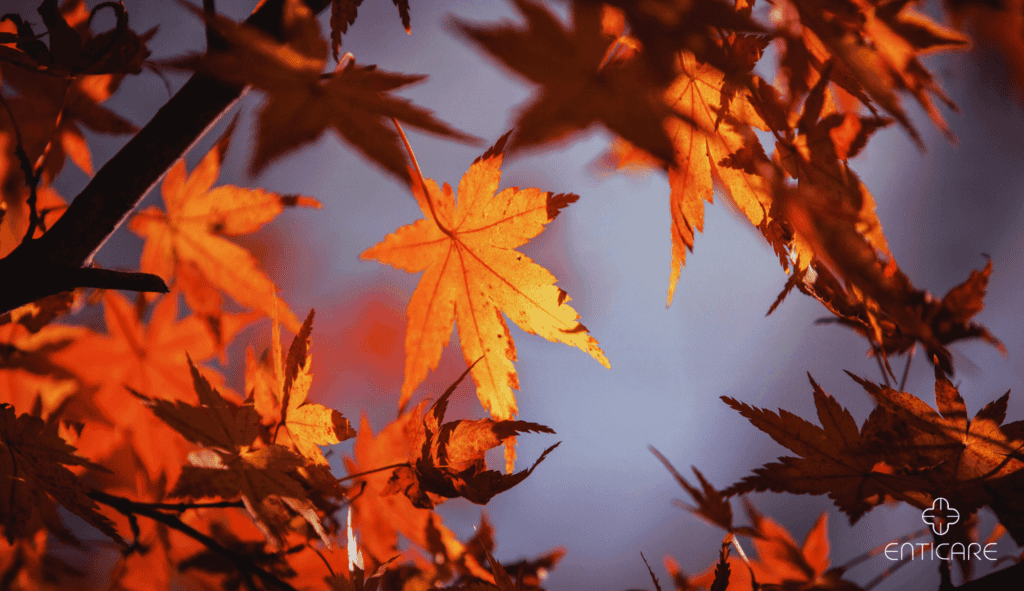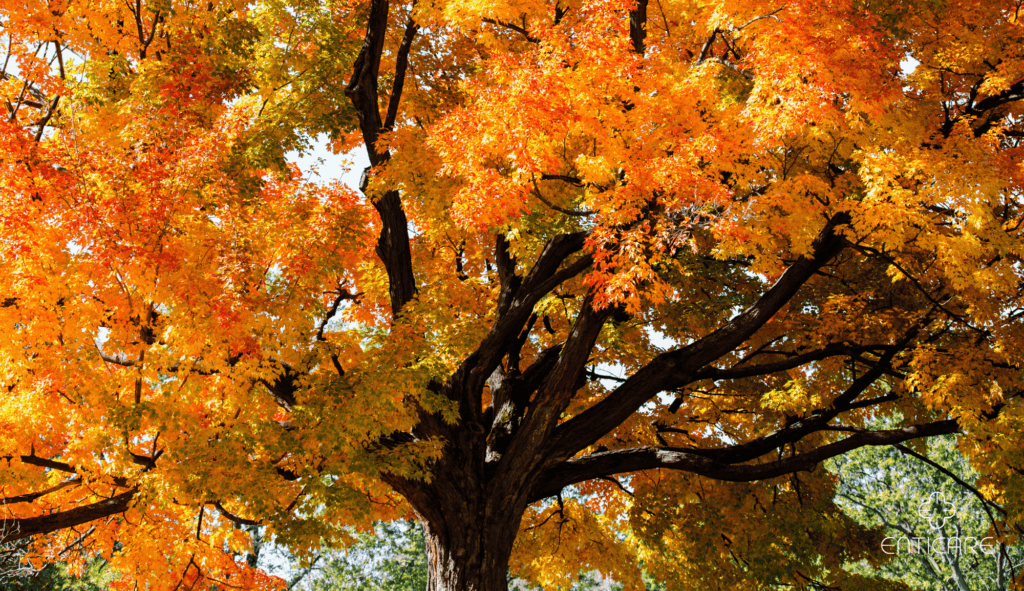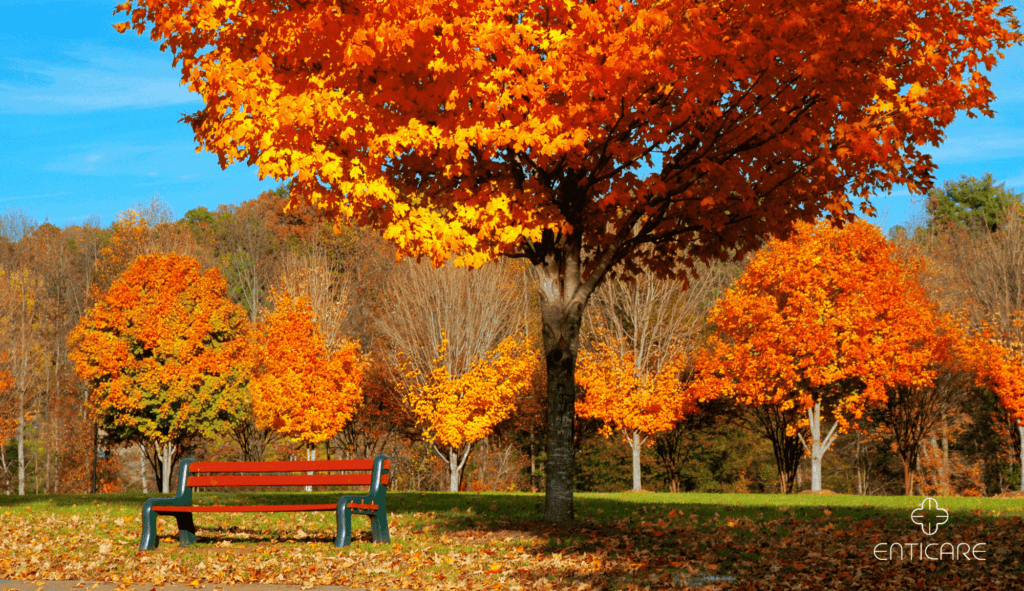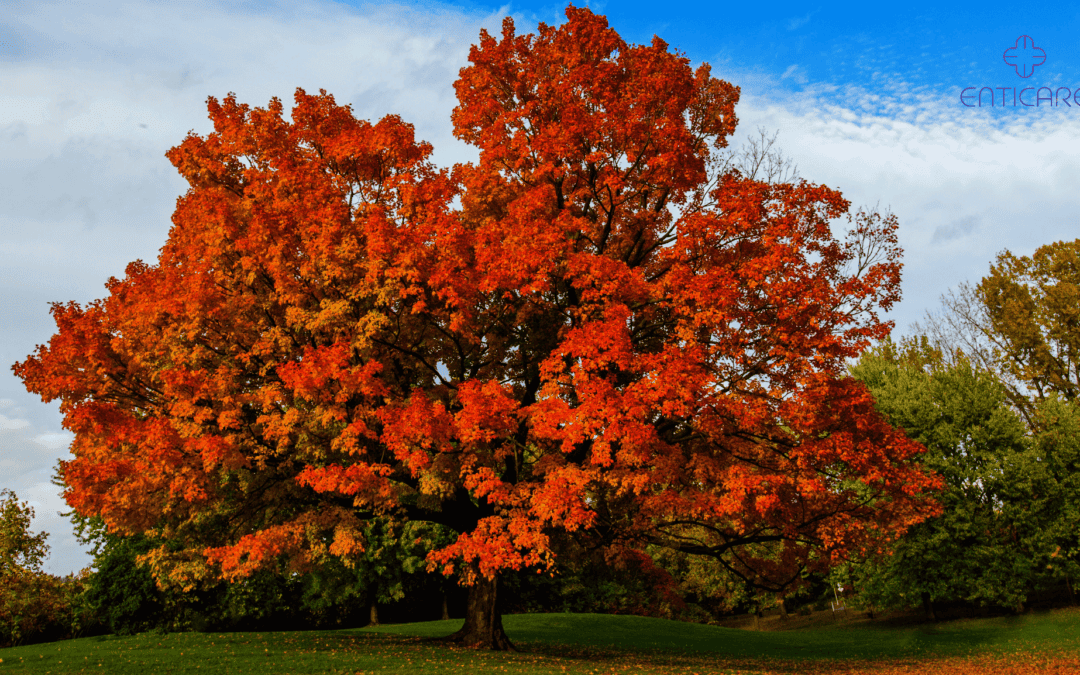For many, the sight of maple trees evokes thoughts of beautiful fall foliage or the sweetness of maple syrup. However, for those with a tree pollen allergy, specifically a maple tree allergy, these trees can be a source of misery. If you find yourself sneezing, congested, or suffering from itchy eyes during certain times of the year, a maple tree allergy, also known as allergic rhinitis, could be the culprit. Understanding the cause, recognizing the symptoms, and knowing how to treat and manage this allergy can help you reclaim control over your life.

What is Maple Tree Allergy?
Maple tree allergy is a type of seasonal allergy that occurs when the immune system reacts to the proteins present in the pollen of maple trees. Also known as hay fever or allergic rhinitis, this condition is triggered when the body mistakenly identifies maple pollen as a harmful substance. Maple trees are among the most common trees in North America, and their pollen is a frequent cause of allergy symptoms such as sneezing, runny nose, itchy eyes, and congestion. Understanding this allergy can help sufferers take appropriate steps to manage their symptoms effectively.
What Causes Maple Tree Allergy?
Maple tree allergy, like many pollen allergies, develops when your immune system overreacts to harmless substances like pollen. Trees produce pollen at various times of the year, contributing to seasonal allergies. In this case, the allergen is maple tree pollen, which becomes airborne during the spring and early summer months.
Pollen Production and Counts
Maple trees release their pollen into the air during the spring season, typically between March and June. The small, lightweight pollen grains can travel long distances in the wind through a process known as pollen dispersal, making it easy for people to inhale them. Once these grains enter your nasal passages, your immune system can mistake them for harmful invaders and trigger an allergic response. Tree pollen counts are influenced by environmental factors such as wind and time of day, with levels usually highest in the morning and on breezy days.
Cross-Reactivity
One of the challenges of a maple tree allergy comes from cross-reactivity. Many people who are allergic to maple trees may also experience allergic reactions to other types of trees, such as oak, ash, or birch. This happens because the proteins in these tree pollens are similar, causing the immune system to respond in the same way. Cross-reactivity can also lead to pollen food allergy syndrome, where individuals experience symptoms such as itching or swelling in the mouth when consuming certain fruits, vegetables, and nuts.
Geographic Influence
Maple trees are widespread in North America, especially in regions like the Northeast and Midwest. People living in areas with a high concentration of maple trees are more likely to suffer from maple tree allergies due to regional pollen variations. Those living in cities where trees are planted for landscaping may also experience higher exposure to maple pollen during the allergy season.
Triggers
Triggers for tree pollen allergy can vary depending on the individual and the specific type of tree pollen they are allergic to. However, some common triggers include:
- High Pollen Counts: When pollen counts are high, it can exacerbate symptoms in people with tree pollen allergy.
- Wind: Wind can carry pollen grains for miles, making it difficult to avoid exposure.
- Temperature: Warm and dry weather can increase pollen production, making symptoms worse.
- Humidity: High humidity can make pollen grains more likely to stick to surfaces, increasing exposure.
- Time of Day: Pollen counts tend to be highest in the morning and early afternoon.
- Seasonal Changes: Tree pollen allergy season typically occurs in the spring and fall, but can vary depending on the specific type of tree and location.

Symptoms of Seasonal Maple Tree Allergy
Allergic rhinitis, also known as hay fever, can present a range of symptoms that affect different parts of the body. These pollen allergy symptoms often mirror those of other seasonal allergies, which can make it tricky to pinpoint maple pollen as the specific cause.
Respiratory Symptoms
The most common symptoms include respiratory issues like sneezing, nasal congestion, and a runny nose. You may also experience postnasal drip, where mucus runs down the back of your throat, leading to a sore throat or coughing. In more severe cases, maple tree allergies can trigger asthma, causing wheezing and difficulty breathing.
Eye Irritation
Maple tree pollen can cause itchy, watery eyes, a condition known as allergic conjunctivitis. Your eyes may also become red and swollen, which can make it uncomfortable to be outside during peak pollen season.
Skin Reactions
Some people with maple tree allergies also experience skin symptoms, such as contact dermatitis, hives, or eczema flare-ups. This happens when pollen comes into contact with sensitive skin, causing redness, itchiness, or even small blisters in severe cases.
Effective Treatments for Maple Tree Allergy
After identifying a maple tree allergy, you can explore several allergy treatment options, including allergy medications, to alleviate your symptoms. The right treatment plan depends on the severity of your symptoms and your overall health.
Allergy shots are a form of allergen immunotherapy that provides long-lasting relief by gradually desensitizing your immune system to specific allergens through injections. Sublingual immunotherapy is a convenient alternative to allergy shots, as it can be self-administered at home without the need for painful needles or medical visits.
Antihistamines
Over-the-counter or prescription antihistamines, also known as histamine blockers, help block the release of histamine, a chemical your immune system produces during an allergic reaction. Antihistamines reduce symptoms such as sneezing, runny nose, and itchy eyes. They are a common first-line treatment for managing mild to moderate maple tree allergy symptoms.
Nasal Corticosteroids
Nasal corticosteroids, often administered as nasal sprays, reduce inflammation in the nasal passages, providing relief from congestion and sinus pressure. These medications work by calming the immune system’s response to allergens and are especially effective when used regularly throughout allergy season.
Allergy Immunotherapy
For those with severe or chronic symptoms, allergy immunotherapy may be the best option. This treatment involves gradually exposing the body to small amounts of the allergen, either through injections or sublingual drops, over a period of time. The goal is to desensitize your immune system to allergen exposure so it no longer overreacts to maple pollen.
Herbal Remedies
While there are no specific herbal remedies that can cure maple tree allergy, some natural remedies, including certain herbs, may help alleviate symptoms. These include:
- Quercetin: A natural antihistamine found in herbs such as nettle leaf and chamomile, quercetin can help reduce the release of histamines, which are responsible for many allergy symptoms.
- Nettle Leaf: Known for its anti-inflammatory properties, nettle leaf may help reduce inflammation and alleviate symptoms like nasal congestion and sneezing.
- Butterbur: This herb has been shown to reduce inflammation and may help relieve symptoms of allergic rhinitis.
- Echinacea: Often used to boost the immune system, echinacea may help reduce the severity of allergy symptoms.

Take Control of Your Allergy Today
Living with a maple tree allergy doesn’t have to disrupt your life. Understanding the cause, recognizing the symptoms, and implementing effective allergy management strategies to reduce exposure can help you regain control over your health and well-being. If you believe you may be suffering from a maple tree allergy, it’s important to seek professional care.
Don’t wait to get the relief you need—schedule an appointment with our allergy specialists today! Click here to book a consultation and begin your journey toward a symptom-free life.

